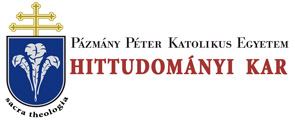Folia Theologica et Canonica 9. 31/23 (2020)
Sacra theologia
62 SZABOLCS ANZELM SZUROMI, O.PRAEM. letters, which were delivered to several states. This legal concept had become described by Emilio Visconti-Venosta (t 1914) minister of foreign affairs on October 18th 1870. It was the basis for the document of May 13th 1871: Legge sulié prerogative del Sommo Pontefice e della S. Sede e sulle relazione dello Stato colla Chiesa, which named in brief form “Law of Guarantees”. This “Law” tried to guarantee the independence of the Holy See and the right to keep or develop further diplomatic relations, including rights of accredited ambassadors (nuncios) to states or international legal entities.12 This is that particular political - legal situation which created the “Roman Question”, and which caused that limited diplomatic capacity of the Roman Pontiff and the Holy See what we could see during the World War I (1914-1918). These circumstances had become worse when Italy entered into the war on April 26th 1915, making impossible to the Holy See to continue independent diplomatic relations and negotiations without get into conflict with Italian Governments and authorities. This problem especially had arisen regarding the embassies and diplomats accredited to the Holy See. The “extraterritoriality” status - which was mentioned in the “Law of Guarantees” - could not be a basis to protect the real independence - without Italian or foreign intervention - for enforce the Papal policy. It is also well known that the Holy See - because the lack of the Vatican’s international legal situation - had to withdraw the Austrian and German Embassies to Switzerland as the only solution to protect them. The “Law of Guarantees” did let the Vatican to take “moral responsibility” for them, which actually was an impossible task, because there was now legal instrument of the Holy See to guarantee their security within Italian territory.13 This unacceptable situation can be supported well by the Italian censorship of the Holy See’s diplomatic communications and diplomatic packages. The Holy See was not even able to use freely her own newspapers - including L 'Osservatore Romano - for protesting against the unlawful activities. We can also indicate the impossibility of creation cardinals to the territory of Central Powers. On one hand Spain offered to the pope to move to Spanish territory (into the Escorial) as temporary residence, on other hand this initiative could not serve the goal of the Papacy and the entire Catholic Church, particularly during this war-time. The Central Powers - namely Germany - proposed the reconsideration of the “Law of Guarantees” in October 1915, to grant territorial sovereignty to the Papacy. Nevertheless, this initiative happened without any previous consultation with the Holy See, and even Gasparri had reacted very vigorously against this external intervention, saying “we are not interested in foreign schemes”. For the end of 1915 and beginning of 1916 had been crystallized 12 Cammeo, R, Ordinamento giuridico dello Stato della cittä del Vaticano, Firenze 1932. 18-23. 13 Pollard, J. F., The Unknown Pope. Benedict XV, 97-98.
